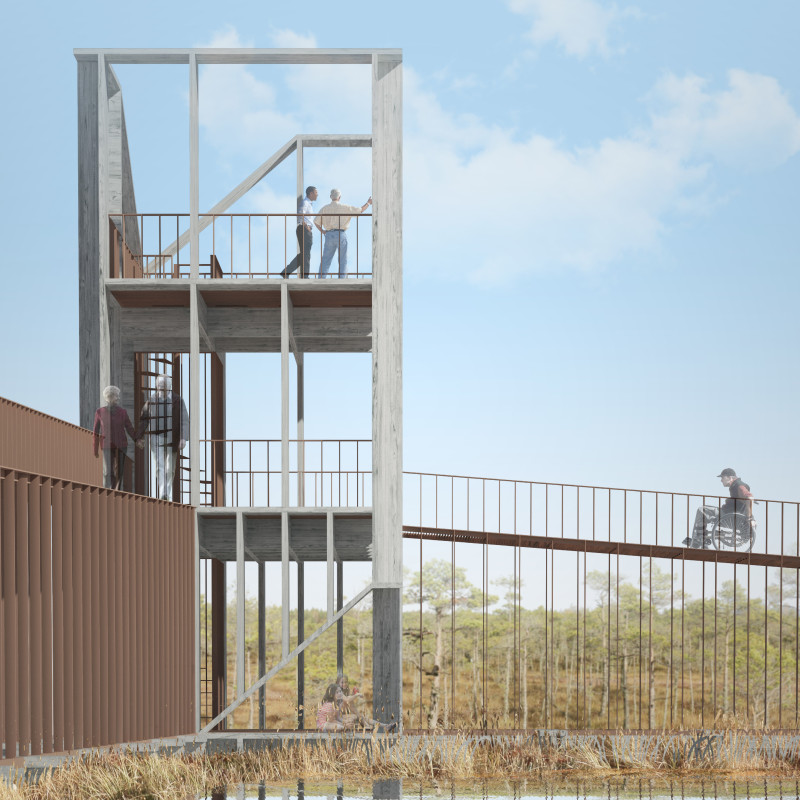5 key facts about this project
Set in the wilderness of Ķemeri, the design invites visitors to engage deeply with the natural landscape. It features a network of boardwalks that wind through low scrubland, forests, and bogs. By prioritizing accessibility, the design creates spaces that encourage exploration and connection with the diverse ecosystems of the area.
Concept and Design Intent
The main idea is to create a framework that guides visitors through the landscape and highlights its defining features. Site B has been chosen for its close proximity to various natural elements, which enhances the experience. The layout of the pathways is designed for smooth circulation, allowing both ambulant and wheelchair users to navigate the observation areas comfortably.
Spatial Configuration and Observation Deck
At the heart of the design is an observation deck that rises above the tree canopy, offering expansive views of the surrounding landscape. Visitors access the deck via gently sloping boardwalks that create a sense of anticipation as they approach. This arrangement amplifies the visual connection with the environment, encouraging meaningful interaction with nature.
Visual Framing and Engagement
Framing views is a key aspect of the project. It allows for close-up observations of wildlife at ground level while also revealing wider vistas from higher points. These perspectives aim to strengthen the relationship between visitors and their surroundings. Well-placed rest areas along the pathways provide opportunities for reflection and connection with the environment.
Materials and Sustainability
Materials are chosen with care, utilizing Accoya, a type of structural glulam timber that is resistant to rot and stable in varying conditions. This choice helps ensure durability while minimizing ongoing maintenance needs. Welded steel balustrading, finished in a warm red coating, complements the overall design and withstands the harsh elements.
The design encourages an interaction with the landscape, with the elevated structure offering a fresh viewpoint that invites visitors to fully appreciate the environment surrounding them.



























